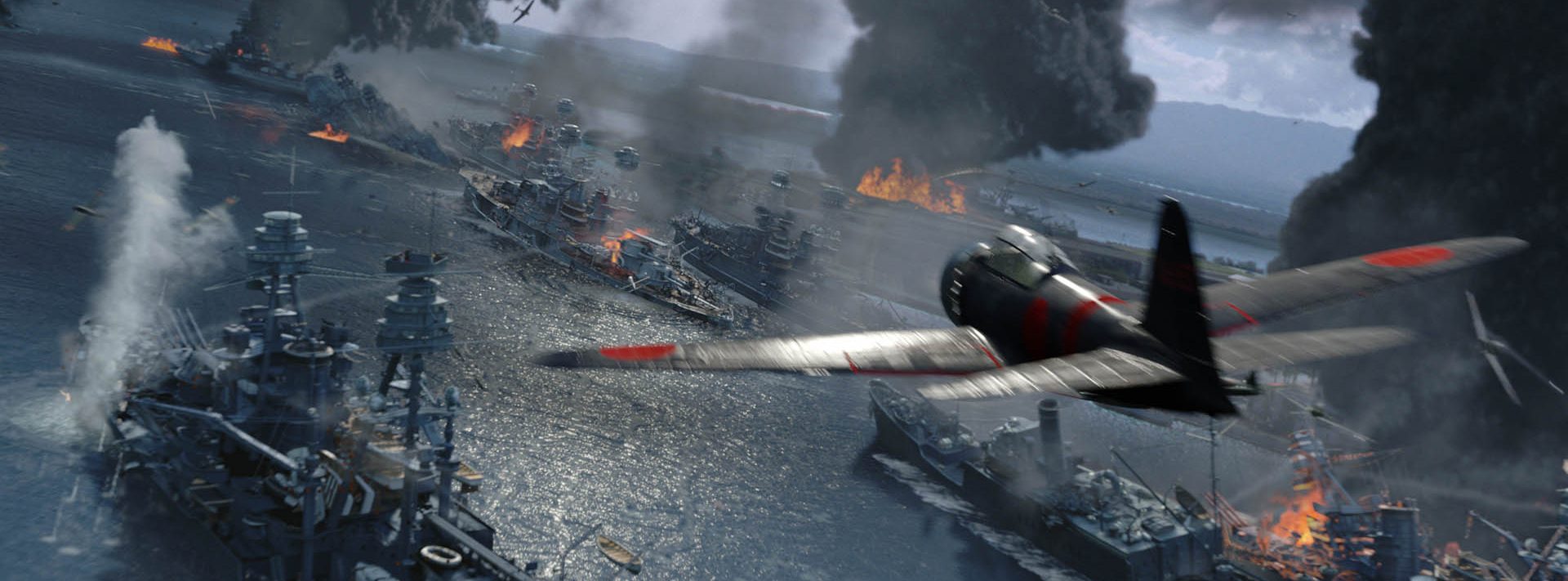The focus of ILM’s work for Pearl Harbor was on the creation of panoramic battle scenes that tied together computer graphics, miniatures, and practical effects with first-unit footage. These scenes were unlike many of the fantasy-oriented projects ILM was used to dealing with because Pearl Harbor called for a seamless blend of visual effects with a familiar historical reality. The resultant scenes contained thousands of elements. The complexity of any one shot was equal to the work that would typically go into 10 isolated event shots.
A “sailor management” tool was created to help insert computer-generated people developed from motion-capture performances. Wherever a sailor was missing in a frame, the VFX artists would use this tool to select an actor and an appropriate uniform to put the CG character right where they needed to be. By the end of the development of this sequence, not even Michael Bay could tell the difference between the real and CG sailors.
Part of recreating such an important historical event is accurately depicting reality. ILM researched the movement of aircraft and ships in reference footage so they could create models of real battleships and CG airplanes from the World War II era. When it came time to film the battle scenes, ILM utilized advances in dynamic simulation techniques to realistically portray airplane crashes and other explosions at sea.
ILM’s Hayden Landis, Ken McGaugh, and Hilmar Koch adapted some concepts originally developed for the studio’s work on Speed 2 known as reflection occlusion and developed a new production technology for Pearl Harbor called ambient occlusion. This lead to the three of them being awarded the Academy Technical Achievement Award at the Academy’s 2010 Sci-Tech Awards. You can read more about the history of the development of ambient occlusion and the technologies that built upon it in the FXGuide article here.
